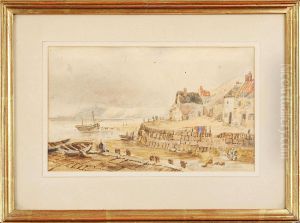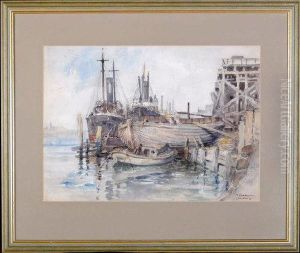Thomas Harrison Paintings
Thomas Harrison was a British architect hailing from the Georgian era, widely regarded for his role in the neoclassical movement that swept through Britain during the late 18th and early 19th centuries. Born on August 7, 1744, in Richmond, Yorkshire, England, Harrison was not only an architect but also a bridge designer, showcasing his diverse talents in various structural forms.
Harrison's education in architecture began under the tutelage of a local builder in Yorkshire. Recognizing his potential, local patrons sponsored him to study in Rome at the Royal Academy, where he was deeply influenced by the classical architecture of antiquity. His time in Italy, which lasted from 1769 to 1776, was pivotal in shaping his architectural style and philosophy. He won the Academy's gold medal in 1770 for a design of a Triumphal Bridge, which would later influence his real-life bridge designs.
Upon his return to England, Harrison settled in Lancaster and quickly became one of the leading architects in the country. His work is characterized by his use of Greek and Roman elements, which was innovative at the time and marked a departure from the prevailing Gothic revival style. Some of his notable works include the design of Skerton Bridge in Lancaster and the Lyceum in Liverpool. He also undertook significant work on Chester Castle and designed various country homes and public buildings throughout the North West of England.
Thomas Harrison's contributions to architecture also include his work in urban planning and the design of public infrastructure. Notably, his design of the Grosvenor Bridge in Chester was considered a technical marvel of its time. Harrison's designs often reflected elegance, symmetry, and a clear adherence to classical principles. He continued to work actively into his later years, leaving a legacy of important neoclassical structures that are still admired today.
Harrison died on April 29, 1829, in Chester, leaving behind a body of work that has been influential in the field of architecture. His adherence to neoclassicism helped to establish it as a dominant architectural style in Britain. Thomas Harrison's bridges, buildings, and public works continue to be studied and appreciated for their design and historical significance.

